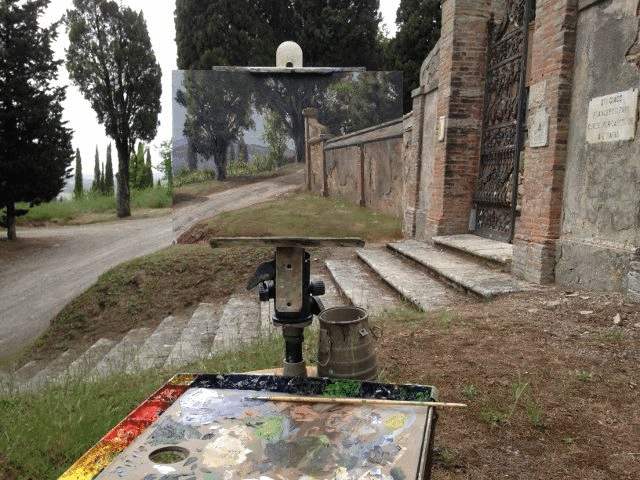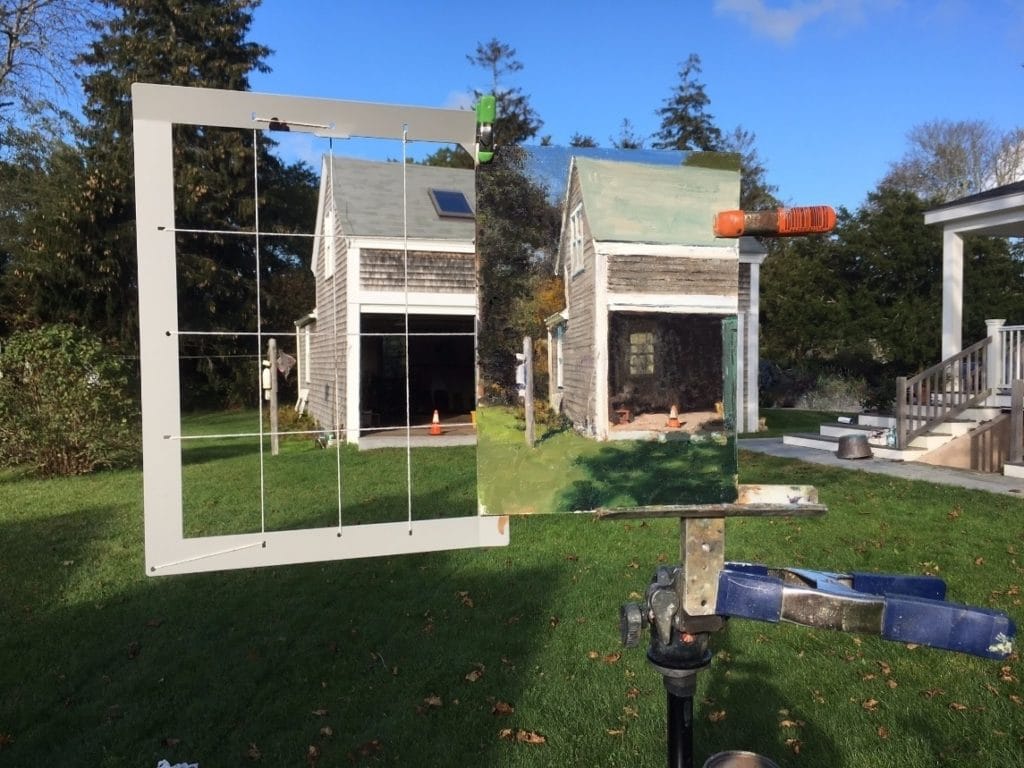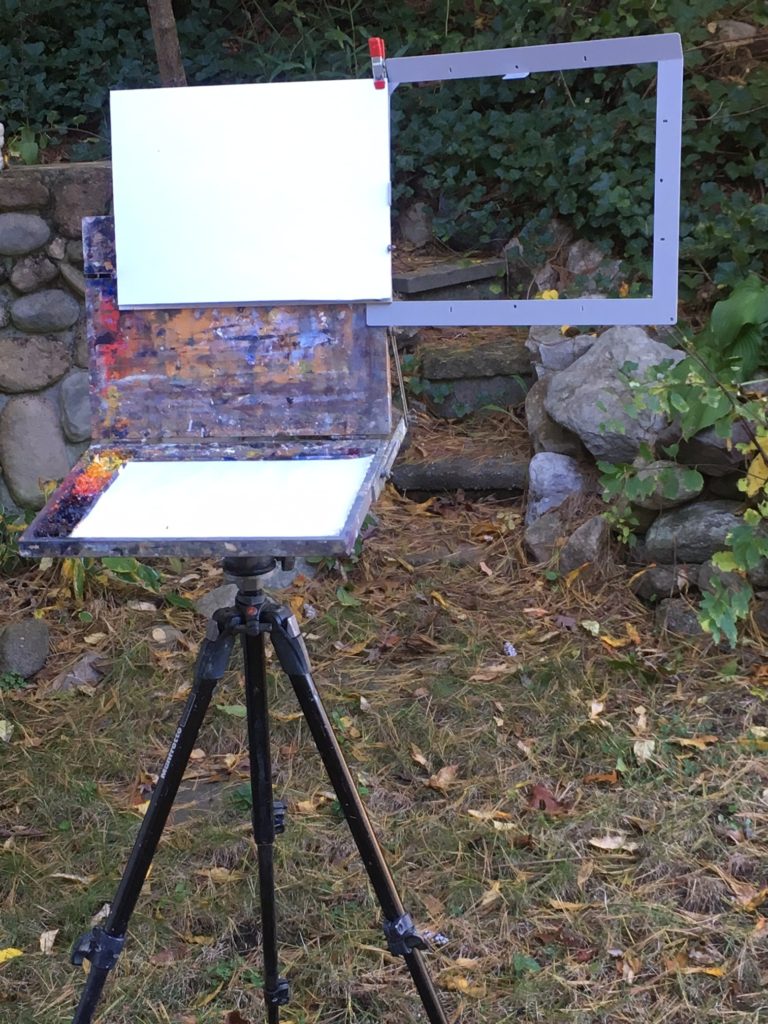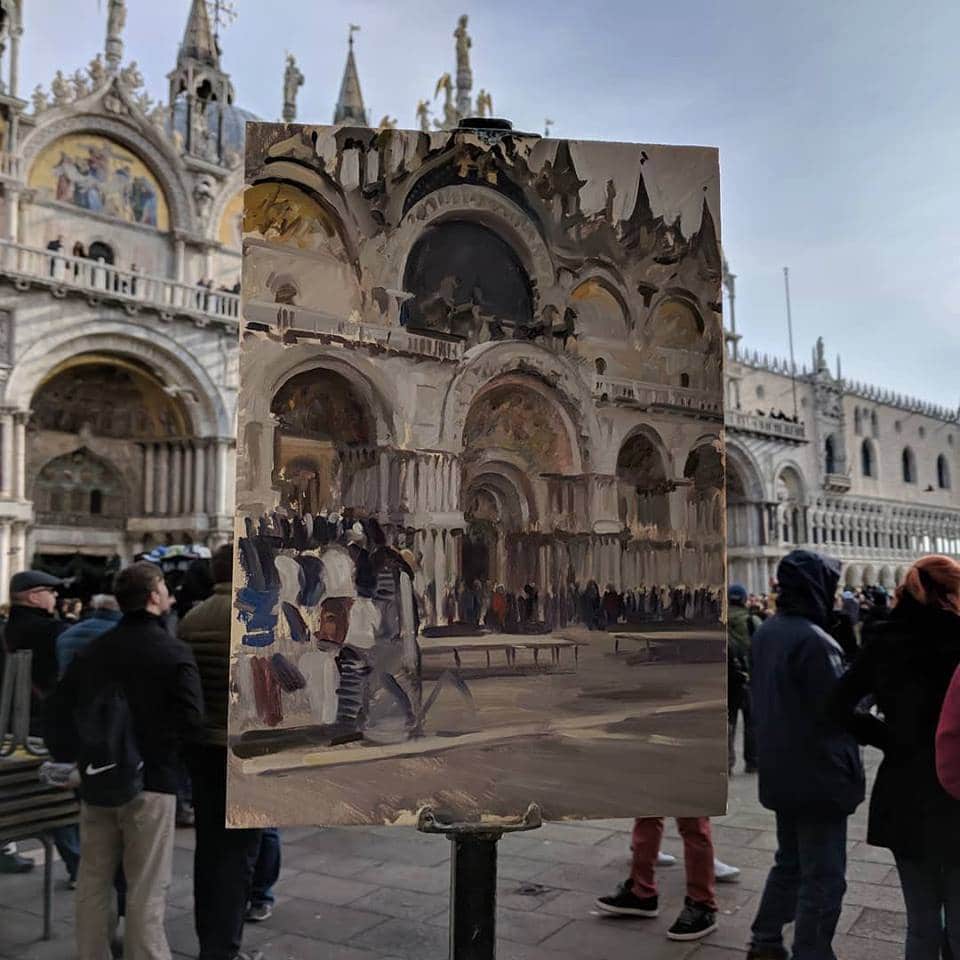
In recent years, top plein air artists have been painting landscapes with procedures associated with academic studio painting. Painters like Marc Dalessio, Joseph McGurl, and Matt Chinian all frame their landscape subjects inside a rigid viewer, then paint exactly what they see inside that rectangle. Find out why.
Sight-Size Method for Painting Landscapes
“The sight-size method is incredibly useful for landscape painting as it allows the painter to focus on the colors, values, and edges to such an extent that the shapes almost seem to take care of themselves,” says Marc Dalessio in one of his informative blogs. “For atelier-trained painters, especially who have spent years painting with the sight-size method in the studio, it seems a waste not to continue using it outdoors. In the case of sketching the large view of a landscape onto a small panel with the sight-size method, the trick is to make sure artists keep their heads in the right position where the subject ‘fits’ onto the panel. Many painters do this instinctively without realizing it.”

“Whether painting in the studio or outdoors, the sight-size viewfinder is the best way to find your composition, refine your drawing skills, expand your creativity, and speed up the process,” adds Joseph McGurl, an artist who markets a sight-size viewfinder. “The viewfinder helps artists choose their compositions because they will be defined by the frame. The painting will then be the same scale as it is seen in the viewfinder. For beginners and intermediate artists alike, the viewfinder will help in drawing more accurately and more quickly. The viewfinder will help will train artists’ eyes so they will not always rely on measuring. They will be able to make accurate drawings by eye.”

McGurl continues, “Accomplished artists can use the viewfinder to paint faster, something that is critical when painting on location. Studio painters will find that they will spend less time composing and making corrections on paintings. This is important because time is the artist’s most valuable asset. If artists choose to maintain a close fidelity to nature and are careful with drawing and color, they should be able to line up the painting to the actual scene. The painting will then blend into the surroundings.
“There are two ways to crop the scene. Moving closer or further from the subject, or moving closer or further from the viewfinder lets painters decide how the elements will fit into their compositions. If they choose, the artists can add a string grid to the outside edges of the viewfinder so they can locate the selected elements within the individual squares of the grid. Artists choose a spot from which to paint or draw the shapes they see in the viewfinder at exactly the same size, which is sight-sized on the panels.”
Related video on painting landscapes >
(Click here to learn more about Joseph McGurl’s Advanced Landscape Painting video workshop)

He goes on, “Artists begin to fill in the colors and adjust the drawing by eye or measurement. Because the painting is right next to the subject and is the same scale, it is easy to make comparisons. The shapes and colors artists see in the viewfinder are compared to what they have painted. For outdoor painting, the colors and shadows will shift with the changing light, but as the viewfinder will help the painting progress more quickly, the changes won’t be as dramatic.

“It is important to remember that the viewfinder is a guide. Artists may choose to depart from a close translation of the scene to a more interpretive expression. The colors can be more vibrant or subdued, the mountain made steeper, the tree moved into the scene to improve the composition. The value of the viewfinder is that it helps the artist make these alterations based on intellectual or emotional responses, and not from poor drawing or inaccurate assessments of colors and values. The viewfinder can be a point of reference or a point of departure. Every artist is unique and will find ways the viewfinder can be incorporated into their art-making process.”
***
This article has been updated; it was written by Steve Doherty and published on OutdoorPainter.com in 2019
Related > Listen to Marc Dalessio on the PleinAir Podcast with Eric Rhoads:
And browse more free articles here at OutdoorPainter.com




Fantastic article! I tend to paint sight size but do not use a viewfinder anymore and when I did use one it was much smaller. The translation was relative. Love this idea of a larger viewfinder locking in the actual optical image, looking through a measured space as some of the early pioneers of perspective have done. I have much respect for the painters selected in this article. Thank you!
For sale? Or instructions how to make
[…] Painting Landscapes: Paint Exactly What You See […]